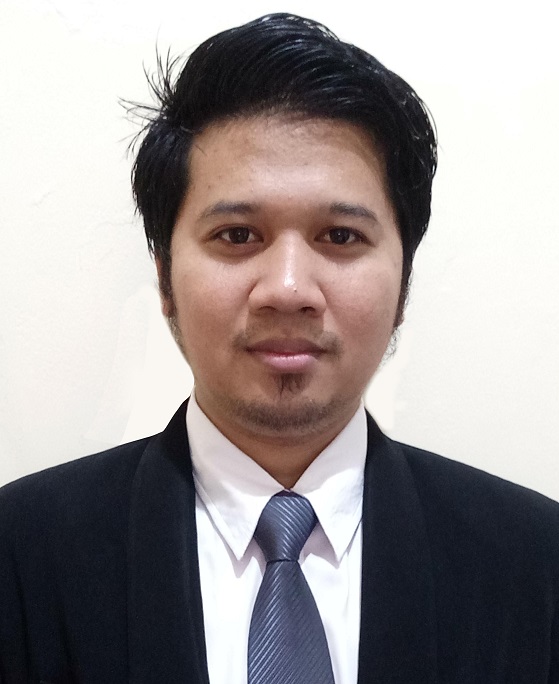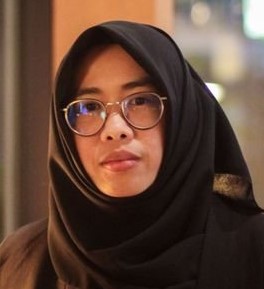AUTHOR GUIDELINES
Manuscripts can be written in Indonesian or English. The Jurnal Sumberdaya HAYATI Resource Journal can be accessed online at http://biologi.ipb.ac.id/jurnal/index.php/jsdhayati
We accept original research as well as reviews (for author with related track record with particular topic)
Accepted manuscripts are manuscripts that have never been published or are not in the process of publication in other national or international scientific journals.
Authors should refer to the writing instructions below when preparing the manuscript.
Authors are required to suggest 2 reviewers (full name and their institutional email) when submitting a manuscript. The manuscript can be submitted in the form of MS word file and additional information can be written in the "comment for editor" column when submitting the manuscript.
FORMAT
The JSDH template can be downloaded here : https://ipb.link/template-jsdh
In order for a manuscript to be published, authors are expected to follow a predetermined format. Manuscripts including the Abstract are typed double-spaced on A4 size HVS paper (21 cm x 29.7 cm) with 4-sided margins of 2 cm, Times New Roman font size 12. Manuscripts are typed using the Microsoft Word (doc.) program. The structure of the manuscript contains Introduction, Materials and Methods, Results, Discussion and Bibliography.
Each page is numbered sequentially, maximum 15 pages or contains 3000 – 4500 words including tables and figures. Tables and figures are presented at the end of the manuscript on separate sheets. Images (JPEG format), graphs and tables (Microsoft Excel) need to be included in separate files to make the editing process easier.
The Manuscript sections are written in the following order:
Article Title
Name of researcher and member (full name)
Correspondence author's name, include: telephone number, fax, and e-mail
Abstract
Keywords
INTRODUCTION
MATERIALS AND METHODS
RESULTS
DISCUSSION
ACKNOWLEDGEMENT
REFERENCE
Figures and Tables
DETAILED DESCRIPTION OF THE MANUFACTURING SECTION
Title. The title consists of a maximum of 15 words, not including conjunctions. Titles are written in Indonesian and English.
Author data. List all authors with full names (no abbreviations) and complete addresses of authors (complete with postal code).
Example: Johan Santosa, Department of Agronomy, Faculty of Agriculture, Bogor Agricultural Institute, IPB Darmaga Campus, Bogor 16680. For correspondence authors, telephone data, fax number and e-mail address are added.
Abstract. Abstracts are written in English and have a maximum of 200 words without including abbreviations or acronyms. The abstract should start with the background of the research. Next, state the research problem. The results listed are the main findings that directly answer the research problem. Include one or two sentences to discuss the research results. The Editor reserves the right to edit the Abstract for reasons of clarity. The abstract is equipped with a maximum of 6 keywords, the most important first order keywords.
Introduction. Write the background of the research and mention other research that has been carried out. Provide a description (local and scientific name) of the organism studied.
Materials and Methods. The Methods section should be detailed enough to answer some or all of the following questions: (i) Was the research experimental or exploratory?; (ii) Are the methods described in sufficient detail so that the study can be replicated?; (iii) If the research uses previous researchers' methods, briefly explain those methods. If making method modifications, describe the modified part; (iv) Name and number of samples, if using samples belonging to another party, include the owner of the sample; (v) Research location and date of sampling, location and time of research; (vi) when using Human samples, must follow the code of ethics.
Results. Results and Discussion must be written separately. State the results obtained based on the method used. Do not present the same data in tables and graphs. Do not include literature in writing results. Quantitative data must include standard deviation notation of data processing results. All data given in the Results must be expressed in tables or graphs.
Discussion. Discuss data from research conducted by comparing data from other or previous research. Point out the similarities, differences and uniqueness of the research results. Explain the prospects of the research results for future research. End the discussion with a conclusion.
Acknowledgement. Include the source of funds (Institution, contract year) and to whom the grant was awarded. Name of person or party who assisted with this research.
Bibliography. The bibliography lists the libraries used in the manuscript. The library in the form of journals amounts to a minimum of 80% of primary literature (in the form of journals). Websites, personal communications, should be included in the inner text and bracketed. Example: “...... the amino acid sequences of the genes obtained from this study were compared to obtain homology with BLAST (http://www.ncbi.nlm.nih.gov/blast)”. If there is a personal communication as a reference, it is written with the initials of the name accompanied by the year of the statement, for example, (Takahashi 2007, personal communication).
The Jurnal Sumberdaya HAYATI Resource Journal uses the name citation method followed by the year. All references cited in the manuscript must be included in the bibliography. Writing literature in manuscripts follows the pattern: Name, year of publication, for example: (Brower & deSalle 1998) or Brower and deSalle (1998). If there are more than two authors, it is written using "et al." with patterns (Monteiro & Pierce 2001; Morinaka et al. 2002; Rubinoff & Sperling 2002). If there are several references cited, then sort them starting from the oldest year. If several libraries have the same knowledge, then sort them alphabetically. If there are the same authors from the same year, then the order must be made by including the notations a, b, c, etc.
Writing a bibliography:
We suggest author to use standard referencing genetrator (Mendeley, etc)
Bibliography from journals:
Author AB, Author CD, Author EF. 2001. Title. Name Journal 60:128-132.
Example:
Wahyudi AT, Takeyama H, Okamura Y, Fukuda Y, Matsunaga T. 2003. Characterization of aldehyde ferredoxin oxidoreductase-gene defective mutant in Magnetospirillum magneticum AMB-1. Biochem Biophys Res Commun 303:223-229.
Bibliography of textbooks:
Author GH, Author IJ. 2006. Book title. City: Publisher name.
Example:
Schmidt-Nielsen K. 2000. Animal Physiology: Adaptation and Environment. 5th ed. Cambridge: Cambridge Univ Pr.
Bibliography of textbook chapters
Author KL,: Author MN. 1999. Chapter title. In: MN Editor, OP Editor (eds). Book title. 2nd ed. City: publisher name. Matter. 200-235.
Example:
Weir BS. 1996. Intraspecific differentiation. In: Hillis DM, Moritz C, Mable BK (eds). Molecular Systematics. 2nd ed. Massachusetts: Sinauer Assc. p 385-405.
Bibliography of a thesis or dissertation
Author MN. 2002. Title [Dissertation]. College location: college name.
Example:
Widayanti KA. 2006. Color perception of L4M5 gene carrier female Macaca fascicularis [Thesis]. Bogor: Bogor Agricultural Univ.
Table and Figure:
Picture. Use an image size of 8.5 cm wide. Image numbers and titles are written in font 9 with Times New Roman letters.
Statistical graph. Include the standard deviation for each average data.
Photo. Include scale in the image, use arrows on certain objects in the image.
Table. Include the standard deviation for each average data. Table titles must be clear and complete. Table numbers and titles are written in font 9 with Times New Roman.
Photo. The photos contained in the manuscript are black and white or color photos.
Article’s Fee:
Articles published electronically in the HAYATI Resource Journal are free of charge, except for reprint fees: 100,000,-/article (if desired, max 8 lb/article) including postage.








